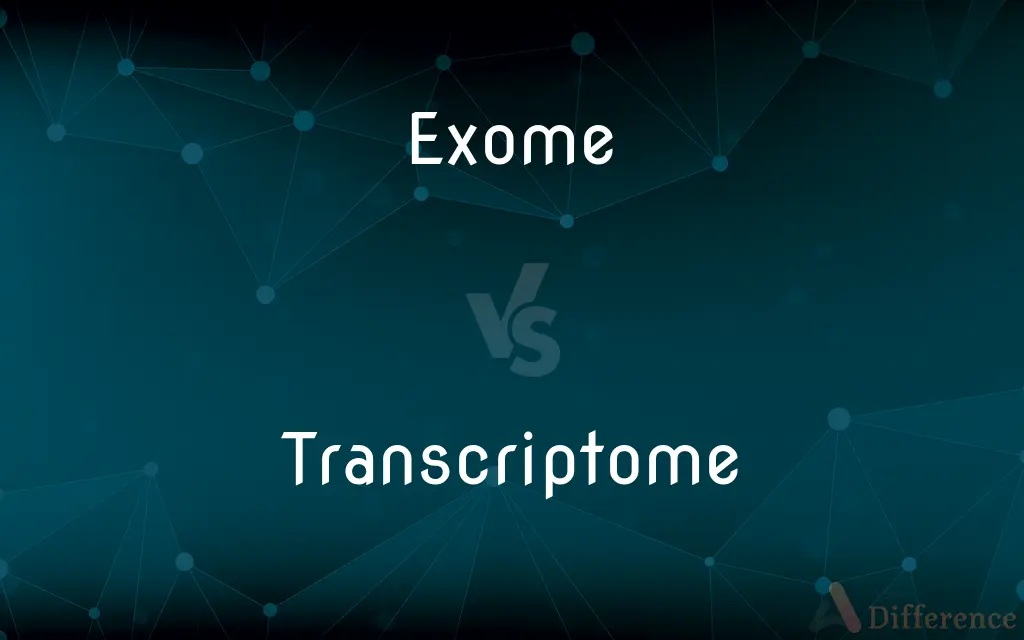Exome vs. Transcriptome — What's the Difference?

Difference Between Exome and Transcriptome
ADVERTISEMENT
Compare with Definitions
Exome
The exome is composed of all of the exons within the genome, the sequences which, when transcribed, remain within the mature RNA after introns are removed by RNA splicing. This includes untranslated regions of mRNA, and coding sequence (or CDS).
Transcriptome
The transcriptome is the set of all RNA transcripts, including coding and non-coding, in an individual or a population of cells. The term can also sometimes be used to refer to all RNAs, or just mRNA, depending on the particular experiment.
Exome
The complete set of protein-coding sequences (exons) of a genome.
Transcriptome
The complete set of RNA molecules (transcripts) produced in a cell or a population of cells.
Exome
(genetics) The complete exon content of an organism or individual; the subset of the genome that excludes introns.
ADVERTISEMENT
Share Your Discovery

Previous Comparison
Throw vs. Drop
Next Comparison
Plot vs. Story













































